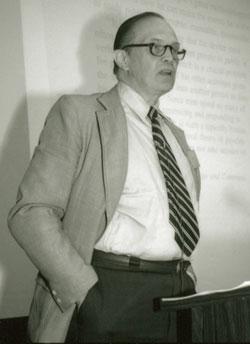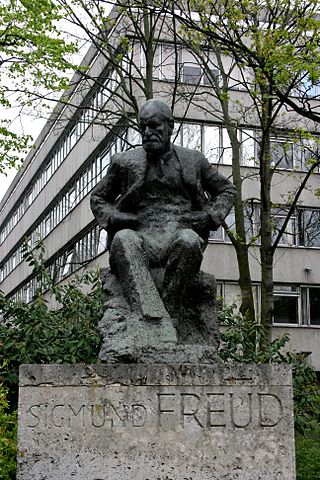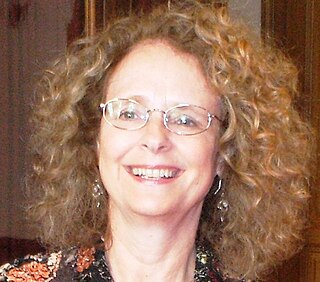Related Research Articles
Psychoanalysis is a set of theories and therapeutic techniques that deal in part with the unconscious mind, and which together form a method of treatment for mental disorders. The discipline was established in the early 1890s by Sigmund Freud, whose work stemmed partly from the clinical work of Josef Breuer and others. Freud developed and refined the theory and practice of psychoanalysis until his death in 1939. In an encyclopedic article, he identified the cornerstones of psychoanalysis as "the assumption that there are unconscious mental processes, the recognition of the theory of repression and resistance, the appreciation of the importance of sexuality and of the Oedipus complex." Freud's colleagues Alfred Adler and Carl Gustav Jung developed offshoots of psychoanalysis which they called individual psychology (Adler) and analytical psychology (Jung), although Freud himself wrote a number of criticisms of them and emphatically denied that they were forms of psychoanalysis. Psychoanalysis was later developed in different directions by neo-Freudian thinkers, such as Erich Fromm, Karen Horney, and Harry Stack Sullivan.

Sigmund Freud was an Austrian neurologist and the founder of psychoanalysis, a clinical method for evaluating and treating pathologies seen as originating from conflicts in the psyche, through dialogue between patient and psychoanalyst, and the distinctive theory of mind and human agency derived from it.

Wilfred Ruprecht Bion DSO was an influential English psychoanalyst, who became president of the British Psychoanalytical Society from 1962 to 1965.

Sándor Ferenczi was a Hungarian psychoanalyst, a key theorist of the psychoanalytic school and a close associate of Sigmund Freud.
Psychoanalytic theory is the theory of personality organization and the dynamics of personality development relating to the practice of psychoanalysis, a clinical method for treating psychopathology. First laid out by Sigmund Freud in the late 19th century, psychoanalytic theory has undergone many refinements since his work. The psychoanalytic theory came to full prominence in the last third of the twentieth century as part of the flow of critical discourse regarding psychological treatments after the 1960s, long after Freud's death in 1939. Freud had ceased his analysis of the brain and his physiological studies and shifted his focus to the study of the psyche, and on treatment using free association and the phenomena of transference. His study emphasized the recognition of childhood events that could influence the mental functioning of adults. His examination of the genetic and then the developmental aspects gave the psychoanalytic theory its characteristics. Starting with his publication of The Interpretation of Dreams in 1899, his theories began to gain prominence.
Magical thinking, or superstitious thinking, is the belief that unrelated events are causally connected despite the absence of any plausible causal link between them, particularly as a result of supernatural effects. Examples include the idea that personal thoughts can influence the external world without acting on them, or that objects must be causally connected if they resemble each other or have come into contact with each other in the past. Magical thinking is a type of fallacious thinking and is a common source of invalid causal inferences. Unlike the confusion of correlation with causation, magical thinking does not require the events to be correlated.

George Armitage Miller was an American psychologist who was one of the founders of cognitive psychology, and more broadly, of cognitive science. He also contributed to the birth of psycholinguistics. Miller wrote several books and directed the development of WordNet, an online word-linkage database usable by computer programs. He authored the paper, "The Magical Number Seven, Plus or Minus Two," in which he observed that many different experimental findings considered together reveal the presence of an average limit of seven for human short-term memory capacity. This paper is frequently cited by psychologists and in the wider culture. Miller won numerous awards, including the National Medal of Science.
"The Magical Number Seven, Plus or Minus Two: Some Limits on Our Capacity for Processing Information" is one of the most highly cited papers in psychology. It was written by the cognitive psychologist George A. Miller of Harvard University's Department of Psychology and published in 1956 in Psychological Review. It is often interpreted to argue that the number of objects an average human can hold in short-term memory is 7 ± 2. This has occasionally been referred to as Miller's law.
In cognitive psychology, chunking is a process by which small individual pieces of a set of information are bound together to create a meaningful whole later on in memory. The chunks, by which the information is grouped, are meant to improve short-term retention of the material, thus bypassing the limited capacity of working memory and allowing the working memory to be more efficient. A chunk is a collection of basic units that are strongly associated with one another, and have been grouped together and stored in a person's memory. These chunks can be retrieved easily due to their coherent grouping. It is believed that individuals create higher-order cognitive representations of the items within the chunk. The items are more easily remembered as a group than as the individual items themselves. These chunks can be highly subjective because they rely on an individual's perceptions and past experiences, which are linked to the information set. The size of the chunks generally ranges from two to six items but often differs based on language and culture.

The Tavistock and Portman NHS Foundation Trust is a specialist mental health trust based in north London. The Trust specialises in talking therapies. The education and training department caters for 2,000 students a year from the United Kingdom and abroad. The Trust is based at the Tavistock Centre in Swiss Cottage. The founding organisation was the Tavistock institute of medical psychology founded in 1920 by Dr. Hugh Crichton-Miller.
Transference is a phenomenon within psychotherapy in which repetitions of old feelings, attitudes, desires, or fantasies that someone displaces are subconsciously projected onto a here-and-now person. Traditionally, it had solely concerned feelings from a primary relationship during childhood.
Information processing theory is the approach to the study of cognitive development evolved out of the American experimental tradition in psychology. Developmental psychologists who adopt the information processing perspective account for mental development in terms of maturational changes in basic components of a child's mind. The theory is based on the idea that humans process the information they receive, rather than merely responding to stimuli. This perspective uses an analogy to consider how the mind works like a computer. In this way, the mind functions like a biological computer responsible for analyzing information from the environment. According to the standard information-processing model for mental development, the mind's machinery includes attention mechanisms for bringing information in, working memory for actively manipulating information, and long-term memory for passively holding information so that it can be used in the future. This theory addresses how as children grow, their brains likewise mature, leading to advances in their ability to process and respond to the information they received through their senses. The theory emphasizes a continuous pattern of development, in contrast with cognitive-developmental theorists such as Jean Piaget's theory of cognitive development that thought development occurs in stages at a time.
Abreaction is a psychoanalytical term for reliving an experience to purge it of its emotional excesses—a type of catharsis. Sometimes it is a method of becoming conscious of repressed traumatic events.
Harold Frederic Searles was one of the pioneers of psychiatric medicine specializing in psychoanalytic treatments of schizophrenia. Searles had the reputation of being a therapeutic virtuoso with difficult and borderline patients; and of being, in the words of Horacio Etchegoyen, president of the IPA, "not only a great analyst but also a sagacious observer and a creative and careful theoretician".

Jessica Benjamin is a psychoanalyst known for her contributions to psychoanalysis and social thought. She is currently a practicing psychoanalyst in New York City where she is on the faculty of the New York University Postdoctoral Psychology Program in Psychoanalysis and Psychotherapy, and the Stephen Mitchell Center for Relational Studies. Jessica Benjamin is one of the original contributors to the fields of relational psychoanalysis, theories of intersubjectivity, and gender studies and feminism as it relates to psychoanalysis and society. She is known for her ideas about recognition in both human development and the sociopolitical arena.

In classical psychoanalytic theory, the Oedipus complex refers to a son's sexual attitude towards his mother and concomitant hostility toward his father, first formed during the phallic stage of psychosexual development. A daughter's attitude of desire for her father and hostility toward her mother is referred to as the feminine Oedipus complex. The general concept was considered by Sigmund Freud in The Interpretation of Dreams (1899), although the term itself was introduced in his paper A Special Type of Choice of Object made by Men (1910).

Arlene Kramer Richards is a practicing psychoanalyst and author based in New York, New York. She has written seven children books and papers on female sexuality, perversion and gambling.
Psychodynamic Therapy with Infants and Parents aims to relieve emotional disturbances within the parent(s), the baby, and/or their interaction, for example, postnatal depression and anxiety, infant distress with breastfeeding and sleep, and attachment disorders. It rests on attachment theory and psychoanalysis. Sigmund Freud suggested that a modification of his method could be applied to children, and child analysis was introduced in the 1920s by [Anna Freud].., [Melanie Klein], and Hermine Hug von Hellmuth. Klein speculated on infantile experiences to understand her patients' disorders but she did not practice PTIP. Donald Winnicott, a pediatrician and analyst, focused on the mother-baby interplay in his theorizing and his brief parent-child consultations, but he did not work with PTIP.
Bruce Fink is an American Lacanian psychoanalyst and a major translator of Jacques Lacan. He is the author of numerous books on Lacan and Lacanian psychoanalysis, prominent among which are Lacan to the Letter: Reading Écrits Closely, The Lacanian Subject: Between Language and Jouissance (1995), Lacan on Love: An Exploration of Lacan's Seminar VIII and A Clinical Introduction to Lacanian Psychoanalysis: Theory and Technique.
Denial or abnegation is a psychological defense mechanism postulated by psychoanalyst Sigmund Freud, in which a person is faced with a fact that is too uncomfortable to accept and rejects it instead, insisting that it is not true despite what may be overwhelming evidence.
References
- ↑ "Language in Emergency MEDICINE" . Retrieved 10 December 2015.
- ↑ "What is Miller's Law and what is it for?" . Retrieved 10 December 2015.
- ↑ Schafer, Jack (May 29, 2019). Psychological Narrative Analysis: A Professional Method to Detect Deception in Written and Oral Communications (2nd Ed.). Charles C Thomas Publisher. ISBN 9780398092801 – via Google Books.
- ↑ Miller, G. A. (1956). "The magical number seven, plus or minus two: Some limits on our capacity for processing information". Psychological Review. 63 (2): 81–97. CiteSeerX 10.1.1.308.8071 . doi:10.1037/h0043158. PMID 13310704.
- ↑ "Miller's Law". changingminds.org. Retrieved 2018-11-08.
- ↑ Boag, Simon; Brakel, Linda A. W.; Talvitie, Vesa (8 November 2018). Philosophy, Science, and Psychoanalysis: A Critical Meeting. Karnac Books. ISBN 9781780491899 . Retrieved 8 November 2018– via Google Books.
- ↑ Talvitie, Vesa (8 November 2018). The Foundations of Psychoanalytic Theories: Project for a Scientific Enough Psychoanalysis. Karnac Books. ISBN 9781855758179 . Retrieved 8 November 2018– via Google Books.
- ↑ "Miller's Law" . Retrieved 10 December 2015.